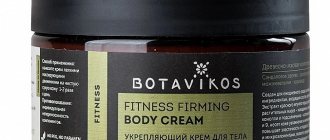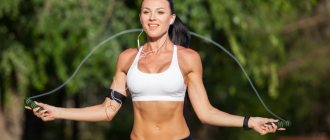An exercise bike is modern sports equipment for intense physical activity of the body. The basic principle of operation is a natural imitation of cycling with a straight and motionless body, and a slight bend of the arms at the elbow joint. Aimed at developing the gluteal, thigh and calf muscles, including the abdominal area. It belongs to the category of cardio exercise equipment with an aerobic principle of action, effectively affecting the heart muscle and lungs.
Cycling training requires careful and constant monitoring of heart rate indicators, which acts as a signal alert to the body. It helps the user to evenly distribute the load, increase the speed and resistance of the machine, eliminating negative health consequences with loss of strength and fatigue of the user.
Why is it important to track your heart rate during exercise?
Monitoring heart rate during cardio training is of great importance not only for the effectiveness of exercise, but also for ensuring the safety of the athlete’s health. Maintaining the correct heart rate will allow you to achieve the greatest calorie consumption, which directly affects the effectiveness of weight loss.
If you start exercising while exercising on an exercise bike without monitoring the state of your body in real time, then there is a high probability that, apart from fatigue, such exercises will not bring any results. Only with a well-structured training process can you achieve success.
How to measure bullets yourself
If your trainer doesn't have heart rate sensors, you can check your heart rate the old-fashioned way. Place two fingers on your neck or on the inside of your wrist until you feel a pulse. Look at your watch and count the number of beats in 10 seconds, multiply this number by 6.
Your heart rate should remain between 50-85% of your maximum heart rate. The maximum permissible frequency is very simple to calculate: subtract your age from the number 220. For example, if you are 35, your maximum heart rate is 185 beats per minute. If you want your heart rate to be 75 percent during exercise, your heart rate should not exceed 138 beats per minute.
June 22, 2021
Share
Exercise bike: acceptable heart rate level
An important parameter for productive and safe exercise is heart rate, or HR for short. Borderline indicators are individual for each organism, depending on gender, age, health status and level of physical fitness. You can find out your maximum heart rate zone after undergoing a special medical examination or use the heart rate formula.
You can calculate your maximum indicator using formulas that are individual for female and male bodies: 220 minus the age of the male user, 226 minus the age of the female user.
There are various average and optimal indicators based on the intended use of the exercise bike. For effective weight loss, heart rate should be approximately 60-75% of the maximum achieved. When improving the body's health, it is recommended to train in the endurance zone - from 75 to 85%. And the warm-up stage takes place in the therapy zone - 50-60%.
For example, a 25-year-old woman. Using the formula, you can calculate that the individual maximum indicator is: 226 - 25 = 201. The recommended frequency for warm-up is 110 beats per minute, for health prevention - 160, and for burning subcutaneous reserve - 150.
Heart rate control will allow the user to monitor the degree of cardio load on the body. If the indicator exceeds the norm, the intensity should be reduced, since the load is excessive for the user; if it is lower, on the contrary, increase it.
Thus, heart rate monitoring:
· An important part of cycling training, which indicates a person’s level of adaptation to physical activity;
· Should be a certain percentage, depending on the user's goals.
How to find your pulse
Most machines can detect your heart rate almost instantly as soon as you turn them on. This allows you to determine your resting heart rate. During training, you can either keep your hands constantly on the sensors, or sometimes grab the handles with your hands. If the sensors are not reading your heart rate, it may be because your hands are too dry or too wet, or they are not positioned correctly.
How to track your heart rate readings
Currently, athletes have several different options for monitoring heart rate readings. First of all, it is important to note that most modern exercise bikes are equipped with built-in heart rate monitors, which allow you to monitor your heartbeat without the use of additional devices.
In addition, fitness bracelets are actively gaining popularity, which also allow you to receive detailed information about the state of the body during exercise. Such devices are synchronized with smartphones and allow you to receive a complete summary of a person’s physical activity.
Exercises for weight loss on an exercise bike
- Warm up (muscles warm up, joints and ligaments are developed, pulse quickens, body temperature rises). The simplest exercises are suitable for warming up - flexion, extension of arms, legs, rotation of arms, legs and head, shallow squats, bends. The main thing is to feel a surge of energy (1-3 minutes);
- Speed 15 km/h – 4-6 minutes;
- Increase speed to 20 km/h;
- Without reducing your speed, stand up on the machine and pedal vigorously;
- The speed level should reach 25 km/h;
- At the last minute, the speed must be reduced to 15 km/h.
- You should never stop at the results achieved, always increase the load.
Note!
You should be in a comfortable position on the machine, but if you place the seat higher, your hips will work harder. This strengthens the buttocks.
After exercising on an exercise bike, you need to do stretching exercises to relieve muscle tension and prevent soreness. Never skip stretching, it not only prevents muscle pain, but also maintains your results and helps the body recover after training.
What are the benefits of an exercise bike?
- Training the heart, blood vessels and lungs.
- Increasing overall physical endurance (resistance to disease, fighting hypertension, obesity, atherosclerosis, strengthening the osteoarticular system).
- Training allows you to get rid of stress and nervous tension, speed up your metabolism, and increase your performance.
Working with heart rate-dependent programs
Modern simulators with electromagnetic loads open wide scope for development for athletes. New opportunities are provided through the use of automated programs with adjustable load, which adapt to the athlete’s condition depending on the readings of contact and external heart rate monitors.
The presented technology allows not only to increase the effectiveness of training, but also to protect the athlete from excessive overload. So, if the heart rate monitor readings begin to go beyond the permissible norm, the simulator automatically begins to reduce the load level so that the person can return to normal.
The Fitness Place catalog offers a wide range of high-quality and reliable sports equipment. Our exercise bikes are functional sports equipment for effective training, which not only create comfortable conditions for a beginner or an experienced user, but also help monitor heart rate parameters without the use of additional equipment.
Accuracy of pulse sensors
Pulse sensors read your heart rate with a value that is close to accurate. The readings in this case are relatively correct, but for more accurate readings it is necessary to use sensors that are fixed on the chest. These sensors are not included with many exercise equipment, but you can purchase one or borrow one from the gym if one is available. Chest strap monitors provide continuous, accurate numbers, but they can be awkward to use throughout your workout.
How does heart rate affect fat burning?
Only beginners believe that the faster our heart beats, the faster the fat burning process occurs. This is a misconception, and a fairly common one. Experts around the world agree that the heart rate on a treadmill should not be maximum to burn fat.
To see this, look at any of the treadmills in the gym or the sports equipment you have purchased. Absolutely any modern simulator today displays (most often in a graphically understandable form) target heart rate zones.
Some zones provide preparation and warm-up for the body. Other running parameters include developing endurance. And only under certain conditions, in a very specific pulse phase, do fat burning processes occur. At the same time, fat is burned within certain limits, and when the pulse “breaks” a certain mark while walking or running on a treadmill, the fat stops melting.
Why exactly is this happening? Have you ever thought about it? And what is this pulse? In order to understand, let’s answer the question, what is a pulse in general?
Essentially, these are pushes of blood into the walls of human arteries. They cause contraction of the heart muscle. In an ordinary (calm) state, the number of these impulses of blood in a person is within the range of 60-100 per minute. At the same time, trained athletes can have even lower values (from 40 to 60).
The load is growing. But even if you want to lose weight as quickly as possible, there is no point in exceeding the upper limits of the heart rate on the treadmill, because there is also considerable DANGEROUS!
What is it? Having broken through the flags of the fat-burning zone, you begin to BURN NOT FAT, BUT PROTEIN - THE MATERIAL OF WHICH YOUR MUSCLES CONSISTE.
“For some reason I can’t build muscle!” - say men who run for an hour at the limit of their strength on a treadmill.
“Well, well...” answers them the body, which simply lacks these glorious “building blocks” for the structure of muscles - proteins. They are burned in the hearth of a cardio workout!
If you don’t know what your personal heart rate should be on the treadmill, but simply “drive” yourself to the maximum, then you are entering the zone of sports and athletic loads, rather than fat-burning ones. They are incredibly high, but since the heart cannot work in the “red” zone for a long time, they are short-lived. But in order for the fat to begin to melt, you need at least 30 minutes of work.
The thing is that there is a constant metabolism in our body. We accelerate it with physical activity, reaching certain indicators. In order for intensive fat breakdown to begin, at least 45 minutes must pass.
Some experts, when determining what heart rate on a treadmill should be achieved for the most effective fat burning, suggest using a simplified formula. They call the figure 65-70% of the upper limit.
How can one determine using a simplified formula what the upper limit is? Very simple. Using only one indicator of age, but excluding the indicator of resting pulse. Let's say the person reading this article is 40 years old. To determine the heart rate on a modern treadmill, at which fat will be lost, and with it excess weight, he must minus his age from 220. What figure comes out? Right! 180. 70% of this figure is 126 beats per minute. That is, by calculating your strength, you can safely run on the treadmill for 30 minutes, if necessary, reducing the speed or even taking a step, without going beyond the boundaries of this pulse.
However! If we use a more complex formula using the resting heart rate indicator, we will be faced with the need to divide the audience of exercisers by gender. The fact is that at rest the pulse is different for men and women:
- For representatives of the stronger half of humanity, it is 60-70 beats per minute;
- For girls 70-80 beats per minute.
Five heart rate zones
It is very important to understand that the treadmill is not just a tool for burning fat. It's multifunctional! And even if we take only one aspect of training taking into account heart rate, it is worth emphasizing:
Heart rate on a treadmill for burning fat is one of 5 zones. What about the others? Let's look at the functionality and purpose of each pulse zone separately.
Entry level (60 percent)
In the plane of the minimum training heart rate lies the so-called “health zone”. This is an initial stage that will benefit everyone equally. And for athletes who are beginning the recovery period after the Camrades ultramarathon in South Africa, and for those who have been discharged from a rehabilitation center after a heart attack. The pulse in this zone is 1.5-2 beats per second. It goes a little beyond 100 beats per minute. Very important processes of preparation for more serious loads are launched in the body. None of the sane athletes would think to immediately start running at 15 km/h on a treadmill and start running at an extremely intense pace. To begin with, low heart rate and preparation. And only then the start.
Fitness area (70 percent)
Conventionally, this is the zone in which we come close to the fat burning process (with the only consideration that it begins after 45 minutes of training). So, the pulse soars to 120-135. In the so-called “blue” zone, lipids are well transported to the muscles. Endurance is trained, muscle fibers are saturated with oxygen. The main thing is endurance! And in this zone her training is in full swing. Metabolic processes are launched. Your work potential improves. Blood pressure is normalized. The heart rate decreases.
Optimal zone (80 percent)
If the previous zone is called “blue” in the language of professionals, then here we are talking about “green”. This is where the optimal heart rate for men and women on the treadmill really develops. Endurance soars to its peak. Aerobic load reaches the ceiling. New body capabilities are being formed. There is an increase in the number of capillaries. It is in this phase that the size and strength of your heart grows. Blood circulation improves. Lactic acid enters the blood.
Anaerobic zone (90 percent)
When the heart rate when walking, and subsequently running on a treadmill, breaks the mark of 90 percent of your capabilities, we find ourselves in anaerobic - yellow! - zone. The pulse soars to 155-165 beats per minute. Cells begin to lack oxygen for oxidation. Their operating mode becomes “oxygen-free”. There is no longer any talk about burning fat. Carbohydrates burn. Increases endurance and performance. The zone is used to intensively build up one's capabilities in advance of competitions.
Maximum load (90-100 percent)
My heart is bursting out of my chest. The pulse rate soars to 185-190 beats per minute. The body is working on the verge of breakdown. It’s as if the athlete is trying to go beyond the limits of his (and human in general!) capabilities.
Yes. This is the heart rate at which athletes become winners. But we want to prevent you from trying to achieve these indicators if your body has not gone through years of planned preparation for them. Maximum performance is always training on the edge. Prepare your body diligently for this kind of record. And answer the question, do you need them based on your goals?
We wish you good luck on a smooth path!











